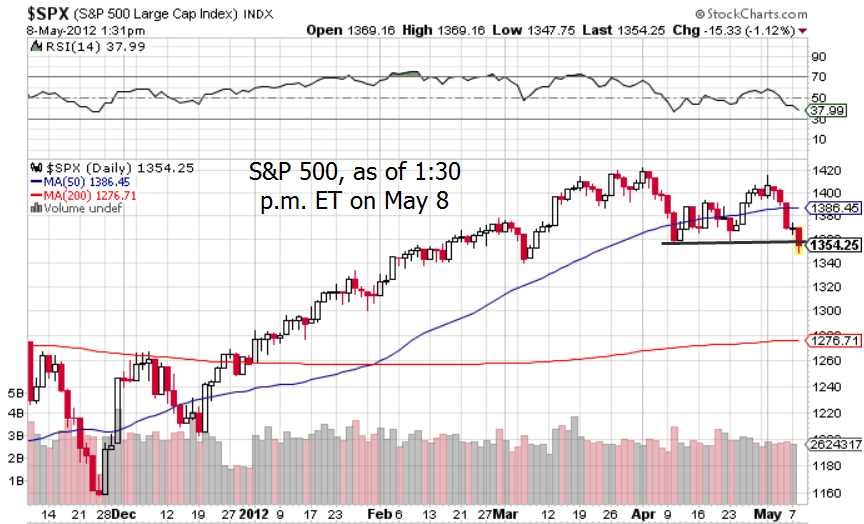By Kevin Flanagan, Head of Fixed Income Strategy
One week into the new year and the money and bond markets have wasted no time generating headlines, with yield levels rising essentially across the spectrum of Treasury (UST) maturities.
Sometimes investors are left searching for answers for these type of quick and sizable rate movements, but not this time. This time around, the catalyst is abundantly clear—the Fed.
The opening trading sessions of 2022 in the US Treasury market did have a decidedly upward rates bias, but it was the release of the December 2021 FOMC minutes that acted as an accelerant for the trend that was already in place.
Hawkish Tilt
Specifically, this summary of the prior Fed meeting had a more ‘hawkish’ tilt to it. The policy makers discussed a potentially quicker pace to balance sheet normalization, but more importantly, they mentioned the possibility of “earlier, faster rate hikes.”
Needless to say, the money and bond markets took this new Fed insight and adjusted their timeline for liftoff, a.k.a. the first rate hike, by beginning to push up the timetable more toward the March 2022 FOMC meeting versus the prior expectation of either May or June.
The December jobs report only added to this sentiment. Yes, the headline nonfarm payroll number did not produce as many jobs as what was forecasted, but perhaps more important in the eyes of the Fed, was the -0.2 percentage point drop in the unemployment rate accompanied by the higher-than-expected year-over-year gain of 4.7% for average hourly earnings.
In fact, over the last six months, wages have risen at an annualized rate of 5.7%, a sign that inflation could remain ‘sticky.’ Thus, a gain of roughly 200,000 in payrolls can be viewed through a different, monetary policy perspective.
OK, so where does that leave us now?
March Meeting
Well, as of this writing, Fed Funds Futures implied probability now sees an over 80% chance of liftoff occurring in March with 3.5 rate hikes now priced in for all of 2022.
Interestingly, St. Louis Fed President Bullard (a 2022 voting member) stated last week, “The FOMC could begin increasing the policy rate as early as the March meeting in order to be in a better position to control inflation.”
Unless Powell & Co. push back on the money and bond markets’ newfound positioning, it looks like four, not three, rate hikes could be in the offing for this year with perhaps a March, June, September and December timeline. This is the playbook Powell used in 2018.
For those keeping count that would be a total of 100 basis points (bps) in rate hikes (assuming only quarter-point increases). However, keep in mind, the Fed may view each FOMC meeting this year as being ‘live.’ That is, they could potentially raise rates at any time.
Takeaway
As I wrote in last week’s blog post, our high conviction trade of rising rates for 2022 should be a primary consideration for fixed income portfolios. Traditional hedging vehicles, such as short-term fixed coupon Treasuries, can produce negative returns in an environment where the Fed is the lead catalyst for higher yields.
In addition, as we have seen within the last week or so, TIPS can also fall into that same category, as witnessed by the 35 bps increase in 10-Year real yields since New Year’s Eve.
In contrast, Treasury floating rate notes are designed to adjust their yield with the Fed as they are reset every week with the weekly 3-month T-Bill auction.
This post first appeared on January 12 on the WisdomTree blog.
Photo Credit: 401(k) 2012 via Flickr Creative Commons
Disclosure
Past performance is not indicative of future results. This material contains the opinions of the author, which are subject to change, and should not to be considered or interpreted as a recommendation to participate in any particular trading strategy, or deemed to be an offer or sale of any investment product and it should not be relied on as such. There is no guarantee that any strategies discussed will work under all market conditions. This material represents an assessment of the market environment at a specific time and is not intended to be a forecast of future events or a guarantee of future results. This material should not be relied upon as research or investment advice regarding any security in particular. The user of this information assumes the entire risk of any use made of the information provided herein. Neither WisdomTree nor its affiliates, nor Foreside Fund Services, LLC, or its affiliates provide tax or legal advice. Investors seeking tax or legal advice should consult their tax or legal advisor. Unless expressly stated otherwise the opinions, interpretations or findings expressed herein do not necessarily represent the views of WisdomTree or any of its affiliates.



